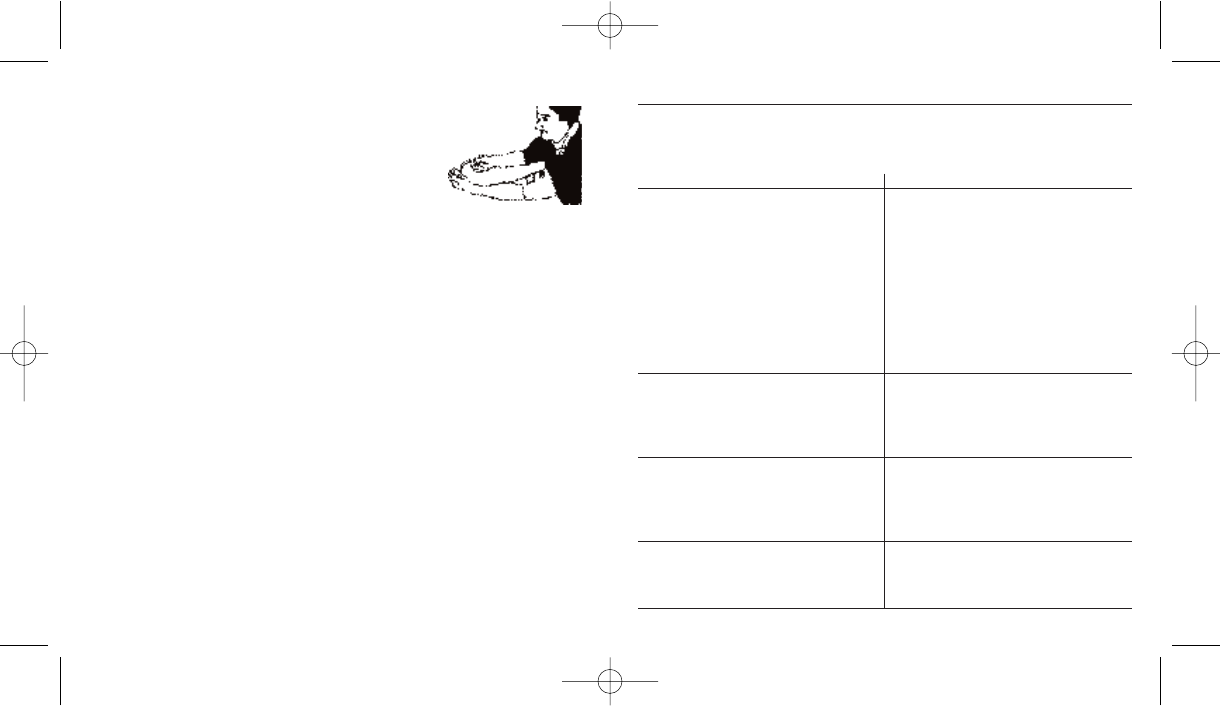
11
5. Other possible malfunctions and their elimination
If problems occur when using the device, the following points should be checked and if
necessary, the corresponding measures are to be taken:
Malfunction
The sound transmission is poor, distorted or
there is extraneous noise.
The pressure does not rise although the bulb
is pumping.
The deflation rate can not be set to
2-3 mmHg/ sec. by adjusting the air release
valve.
Pointer is not at 0 +/- 3 mmHg at rest.
4.5.3. Systolic blood pressure reading
Slightly and repeatedly push button of the valve and hold
stethoscope chestpiece over brachial artery. Proper
deflation rate is essential for an accurate reading, so you
should practice and master a recommended deflation rate
of 2-3mmHg per second or a drop of one to two marks on
the pressure gauge each heartbeat. You should not keep
the cuff inflated any longer than necessary. As the cuff
begins to deflate, you must listen carefully with the
stethoscope. Note the reading on the gauge as soon as you
hear a faint, rhythmic tapping or thumping sounds. This is
the systolic blood pressure reading. Listen carefully and
familiarize yourself with pulse ( Korotkoff’s ) sound.
4.5.4. Diastolic blood pressure reading
Allow the pressure to continue dropping at the same deflation rate. When your diastolic blood
pressure value reached, the thumping sound stops. Deflate the cuff valve completely. Remove the
cuff from arm and stethoscope from ears.
4.5.5. Record your readings
Repeat the measurement at least two times. Do not forget to record your readings and the time
of the day measurement is made immediately after you finish measuring. A suitable time is first
thing in the morning, or just before evening meals. Remember that your physician is the only
person qualified to analyze your blood pressure.
☞ Further information
Measurements should not occur soon after each other, since otherwise, the results will be
falsified. Wait therefore for several minutes in a relaxed position, sitting or lying, before you
repeat a measurement.
10
Remedy
1. Check the earpieces if they are plugged or
cracked. If not, make sure they do not fit
poorly as worn.
2. Check the tube if it is broken or twisted.
3. Check the bell and diaphragm of chestpiece
if there is any crack.
4. Make sure the chestpiece is in proper
contact with skin and over brachial artery
during measuring.
Clean or replace any defective parts if
found to avoid inaccurate reading.
1. Make sure that the valve is closed.
2. Make sure the cuff is properly connected to
manometer.
3. Check if the cuff, tube and bulb is leaky.
Replace the defective parts if any.
1. Disassemble the bulb from manometer to
check if there is any blockage in the airway
of the valve. Clean the blockage and try
again. If it still does not work, replace it to
avoid inaccurate reading.
1. Make sure that the valve is open for zero
check.
2. If still more than 3mmHg deviation, contact
your dealer to recalibrate the manometer.
IB AG1-40 e-f-ru 0106.qxd 2006.1.6 8:53 AM Page 10


















